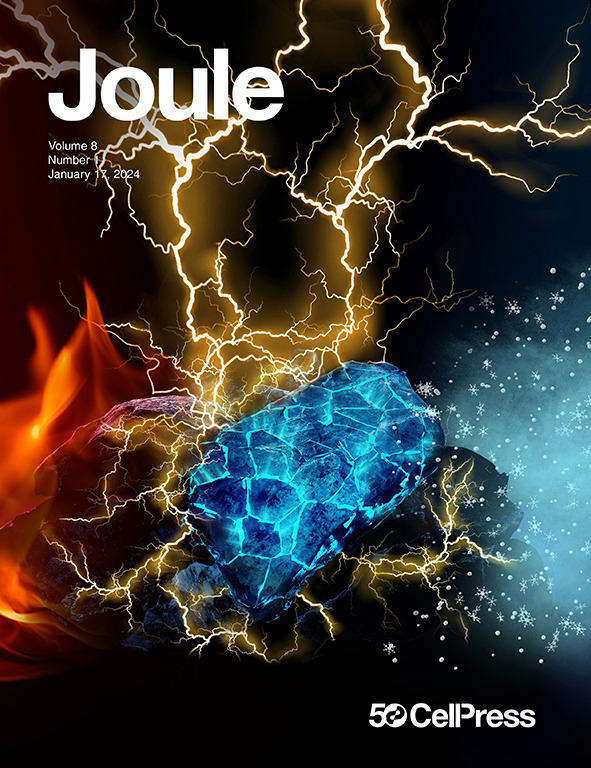通过界面工程和3D架构,使锂离子电池在零下温度下实现6C快速充电
IF 35.4
1区 材料科学
Q1 CHEMISTRY, PHYSICAL
引用次数: 0
摘要
解决快速充电、低温运行和高能量密度电极之间的三难问题对于推动锂离子电池的发展至关重要。在这里,我们介绍了一种利用固体电解质(Li3BO3-Li2CO3)的原子层沉积将三维电极结构与人工固体电解质界面(SEI)相结合的策略。这些协同改性增强了低温和快速充电条件下的质量传输和界面动力学,提高了厚电极的可访问容量(3 mAh/cm2)。为了消除电解质传输和界面阻抗的影响,我们制作了石墨/LixNiyMnzCoaO(NMC)袋装电池,并在低温快速充电条件下测试了它们的电化学性能。在 6C 速率和 -10°C 温度条件下,这些集成电极无需镀锂,即可在 100 个循环后将可访问容量提高 500%,容量保持率达到 97%。低温快速充电条件下的容量保持率也取决于充电状态的波动,这突出表明了充电协议对减少锂镀层的重要性。本文章由计算机程序翻译,如有差异,请以英文原文为准。


Enabling 6C fast charging of Li-ion batteries at sub-zero temperatures via interface engineering and 3D architectures
Addressing the trilemma between fast-charging, low-temperature operation, and high-energy-density electrodes is critical to advance Li-ion batteries. Here, we introduce a strategy that integrates 3D electrode architectures with an artificial solid-electrolyte interface (SEI) using atomic layer deposition of a solid electrolyte (Li3BO3-Li2CO3). These synergistic modifications enhance both mass transport and interfacial kinetics under low temperatures and fast charging, increasing the accessible capacity of thick electrodes (>3 mAh/cm2). To decouple the contributions from electrolyte transport and interfacial impedance, graphite/LixNiyMnzCoaO (NMC) pouch cells were fabricated and their electrochemical performances were tested under low-temperature, fast-charging conditions. At a 6C-rate and a temperature of −10°C, these integrated electrodes enabled a >500% increase in accessible capacity and >97% capacity retention after 100 cycles, without Li plating. The capacity retention under low-temperature, fast-charging conditions was also dependent on the state-of-charge swing, highlighting the importance of the charging protocol to minimize Li plating.
求助全文
通过发布文献求助,成功后即可免费获取论文全文。
去求助
来源期刊

Joule
Energy-General Energy
CiteScore
53.10
自引率
2.00%
发文量
198
期刊介绍:
Joule is a sister journal to Cell that focuses on research, analysis, and ideas related to sustainable energy. It aims to address the global challenge of the need for more sustainable energy solutions. Joule is a forward-looking journal that bridges disciplines and scales of energy research. It connects researchers and analysts working on scientific, technical, economic, policy, and social challenges related to sustainable energy. The journal covers a wide range of energy research, from fundamental laboratory studies on energy conversion and storage to global-level analysis. Joule aims to highlight and amplify the implications, challenges, and opportunities of novel energy research for different groups in the field.
 求助内容:
求助内容: 应助结果提醒方式:
应助结果提醒方式:


